Volume 9
Displaying 51-59 of 59 articles from this issue
-
1999 Volume 9 Pages 313-318
Published: November 30, 1999
Released on J-STAGE: June 27, 2011
Download PDF (958K) -
1999 Volume 9 Pages 319-324
Published: November 30, 1999
Released on J-STAGE: June 27, 2011
Download PDF (1181K) -
1999 Volume 9 Pages 325-330
Published: November 30, 1999
Released on J-STAGE: June 27, 2011
Download PDF (2043K) -
1999 Volume 9 Pages 331-336
Published: November 30, 1999
Released on J-STAGE: June 27, 2011
Download PDF (760K) -
1999 Volume 9 Pages 337-342
Published: November 30, 1999
Released on J-STAGE: June 27, 2011
Download PDF (1122K) -
1999 Volume 9 Pages 343-348
Published: November 30, 1999
Released on J-STAGE: June 27, 2011
Download PDF (888K) -
1999 Volume 9 Pages 349-354
Published: November 30, 1999
Released on J-STAGE: June 27, 2011
Download PDF (869K) -
1999 Volume 9 Pages 355-360
Published: November 30, 1999
Released on J-STAGE: June 27, 2011
Download PDF (605K) -
1999 Volume 9 Pages 361-366
Published: November 30, 1999
Released on J-STAGE: June 27, 2011
Download PDF (805K)
